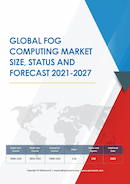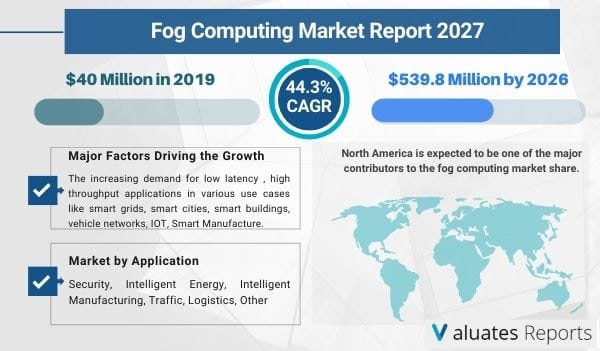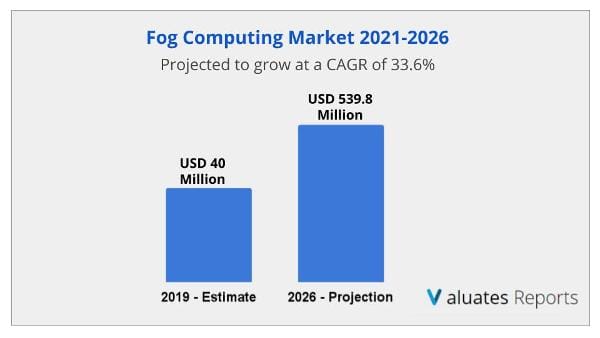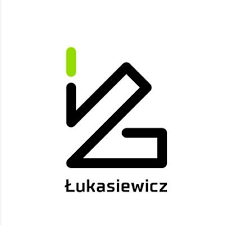Lis of Tables & Figures
Table 1. Fog Computing Key Market Segments
Table 2. Key Players Covered: Ranking by Fog Computing Revenue
Table 3. Ranking of Global Top Fog Computing Manufacturers by Revenue (US$ Million) in 2019
Table 4. Global Fog Computing Market Size Growth Rate by Type (US$ Million): 2020 VS 2026
Table 5. Key Players of Software
Table 6. Key Players of Hardware
Table 7. Global Fog Computing Market Size Growth by Application (US$ Million): 2020 VS 2026
Table 8. Global Fog Computing Market Size by Regions (US$ Million): 2020 VS 2026
Table 9. Global Fog Computing Market Size by Regions (2015-2020) (US$ Million)
Table 10. Global Fog Computing Market Share by Regions (2015-2020)
Table 11. Global Fog Computing Forecasted Market Size by Regions (2021-2026) (US$ Million)
Table 12. Global Fog Computing Market Share by Regions (2021-2026)
Table 13. Market Top Trends
Table 14. Key Drivers: Impact Analysis
Table 15. Key Challenges
Table 16. Fog Computing Market Growth Strategy
Table 17. Main Points Interviewed from Key Fog Computing Players
Table 18. Global Fog Computing Revenue by Players (2015-2020) (Million US$)
Table 19. Global Fog Computing Market Share by Players (2015-2020)
Table 20. Global Top Fog Computing Players by Company Type (Tier 1, Tier 2 and Tier 3) (based on the Revenue in Fog Computing as of 2019)
Table 21. Global Fog Computing by Players Market Concentration Ratio (CR5 and HHI)
Table 22. Key Players Headquarters and Area Served
Table 23. Key Players Fog Computing Product Solution and Service
Table 24. Date of Enter into Fog Computing Market
Table 25. Mergers & Acquisitions, Expansion Plans
Table 26. Global Fog Computing Market Size by Type (2015-2020) (Million US$)
Table 27. Global Fog Computing Market Size Share by Type (2015-2020)
Table 28. Global Fog Computing Revenue Market Share by Type (2021-2026)
Table 29. Global Fog Computing Market Size Share by Application (2015-2020)
Table 30. Global Fog Computing Market Size by Application (2015-2020) (Million US$)
Table 31. Global Fog Computing Market Size Share by Application (2021-2026)
Table 32. North America Key Players Fog Computing Revenue (2019-2020) (Million US$)
Table 33. North America Key Players Fog Computing Market Share (2019-2020)
Table 34. North America Fog Computing Market Size by Type (2015-2020) (Million US$)
Table 35. North America Fog Computing Market Share by Type (2015-2020)
Table 36. North America Fog Computing Market Size by Application (2015-2020) (Million US$)
Table 37. North America Fog Computing Market Share by Application (2015-2020)
Table 38. Europe Key Players Fog Computing Revenue (2019-2020) (Million US$)
Table 39. Europe Key Players Fog Computing Market Share (2019-2020)
Table 40. Europe Fog Computing Market Size by Type (2015-2020) (Million US$)
Table 41. Europe Fog Computing Market Share by Type (2015-2020)
Table 42. Europe Fog Computing Market Size by Application (2015-2020) (Million US$)
Table 43. Europe Fog Computing Market Share by Application (2015-2020)
Table 44. China Key Players Fog Computing Revenue (2019-2020) (Million US$)
Table 45. China Key Players Fog Computing Market Share (2019-2020)
Table 46. China Fog Computing Market Size by Type (2015-2020) (Million US$)
Table 47. China Fog Computing Market Share by Type (2015-2020)
Table 48. China Fog Computing Market Size by Application (2015-2020) (Million US$)
Table 49. China Fog Computing Market Share by Application (2015-2020)
Table 50. Japan Key Players Fog Computing Revenue (2019-2020) (Million US$)
Table 51. Japan Key Players Fog Computing Market Share (2019-2020)
Table 52. Japan Fog Computing Market Size by Type (2015-2020) (Million US$)
Table 53. Japan Fog Computing Market Share by Type (2015-2020)
Table 54. Japan Fog Computing Market Size by Application (2015-2020) (Million US$)
Table 55. Japan Fog Computing Market Share by Application (2015-2020)
Table 56. Southeast Asia Key Players Fog Computing Revenue (2019-2020) (Million US$)
Table 57. Southeast Asia Key Players Fog Computing Market Share (2019-2020)
Table 58. Southeast Asia Fog Computing Market Size by Type (2015-2020) (Million US$)
Table 59. Southeast Asia Fog Computing Market Share by Type (2015-2020)
Table 60. Southeast Asia Fog Computing Market Size by Application (2015-2020) (Million US$)
Table 61. Southeast Asia Fog Computing Market Share by Application (2015-2020)
Table 62. India Key Players Fog Computing Revenue (2019-2020) (Million US$)
Table 63. India Key Players Fog Computing Market Share (2019-2020)
Table 64. India Fog Computing Market Size by Type (2015-2020) (Million US$)
Table 65. India Fog Computing Market Share by Type (2015-2020)
Table 66. India Fog Computing Market Size by Application (2015-2020) (Million US$)
Table 67. India Fog Computing Market Share by Application (2015-2020)
Table 68. Central & South America Key Players Fog Computing Revenue (2019-2020) (Million US$)
Table 69. Central & South America Key Players Fog Computing Market Share (2019-2020)
Table 70. Central & South America Fog Computing Market Size by Type (2015-2020) (Million US$)
Table 71. Central & South America Fog Computing Market Share by Type (2015-2020)
Table 72. Central & South America Fog Computing Market Size by Application (2015-2020) (Million US$)
Table 73. Central & South America Fog Computing Market Share by Application (2015-2020)
Table 74. ARM Holdings Company Details
Table 75. ARM Holdings Business Overview
Table 76. ARM Holdings Product
Table 77. ARM Holdings Revenue in Fog Computing Business (2015-2020) (Million US$)
Table 78. ARM Holdings Recent Development
Table 79. Cisco Systems Company Details
Table 80. Cisco Systems Business Overview
Table 81. Cisco Systems Product
Table 82. Cisco Systems Revenue in Fog Computing Business (2015-2020) (Million US$)
Table 83. Cisco Systems Recent Development
Table 84. Cradlepoint Company Details
Table 85. Cradlepoint Business Overview
Table 86. Cradlepoint Product
Table 87. Cradlepoint Revenue in Fog Computing Business (2015-2020) (Million US$)
Table 88. Cradlepoint Recent Development
Table 89. Dell Company Details
Table 90. Dell Business Overview
Table 91. Dell Product
Table 92. Dell Revenue in Fog Computing Business (2015-2020) (Million US$)
Table 93. Dell Recent Development
Table 94. FogHorn Systems Company Details
Table 95. FogHorn Systems Business Overview
Table 96. FogHorn Systems Product
Table 97. FogHorn Systems Revenue in Fog Computing Business (2015-2020) (Million US$)
Table 98. FogHorn Systems Recent Development
Table 99. Fujitsu Company Details
Table 100. Fujitsu Business Overview
Table 101. Fujitsu Product
Table 102. Fujitsu Revenue in Fog Computing Business (2015-2020) (Million US$)
Table 103. Fujitsu Recent Development
Table 104. GE Digital Company Details
Table 105. GE Digital Business Overview
Table 106. GE Digital Product
Table 107. GE Digital Revenue in Fog Computing Business (2015-2020) (Million US$)
Table 108. GE Digital Recent Development
Table 109. Hitachi Data Systems Business Overview
Table 110. Hitachi Data Systems Product
Table 111. Hitachi Data Systems Company Details
Table 112. Hitachi Data Systems Revenue in Fog Computing Business (2015-2020) (Million US$)
Table 113. Hitachi Data Systems Recent Development
Table 114. IBM Company Details
Table 115. IBM Business Overview
Table 116. IBM Product
Table 117. IBM Revenue in Fog Computing Business (2015-2020) (Million US$)
Table 118. IBM Recent Development
Table 119. Intel Company Details
Table 120. Intel Business Overview
Table 121. Intel Product
Table 122. Intel Revenue in Fog Computing Business (2015-2020) (Million US$)
Table 123. Intel Recent Development
Table 124. Microsoft Company Details
Table 125. Microsoft Business Overview
Table 126. Microsoft Product
Table 127. Microsoft Revenue in Fog Computing Business (2015-2020) (Million US$)
Table 128. Microsoft Recent Development
Table 129. Nebbiolo Technologies Company Details
Table 130. Nebbiolo Technologies Business Overview
Table 131. Nebbiolo Technologies Product
Table 132. Nebbiolo Technologies Revenue in Fog Computing Business (2015-2020) (Million US$)
Table 133. Nebbiolo Technologies Recent Development
Table 134. Oracle Company Details
Table 135. Oracle Business Overview
Table 136. Oracle Product
Table 137. Oracle Revenue in Fog Computing Business (2015-2020) (Million US$)
Table 138. Oracle Recent Development
Table 139. Prismtech Company Details
Table 140. Prismtech Business Overview
Table 141. Prismtech Product
Table 142. Prismtech Revenue in Fog Computing Business (2015-2020) (Million US$)
Table 143. Prismtech Recent Development
Table 144. Schneider Electric Software Company Details
Table 145. Schneider Electric Software Business Overview
Table 146. Schneider Electric Software Product
Table 147. Schneider Electric Software Revenue in Fog Computing Business (2015-2020) (Million US$)
Table 148. Schneider Electric Software Recent Development
Table 149. Toshiba Company Details
Table 150. Toshiba Business Overview
Table 151. Toshiba Product
Table 152. Toshiba Revenue in Fog Computing Business (2015-2020) (Million US$)
Table 153. Toshiba Recent Development
Table 154. Research Programs/Design for This Report
Table 155. Key Data Information from Secondary Sources
Table 156. Key Data Information from Primary Sources
List of Figures
Figure 1. Global Fog Computing Market Share by Type: 2020 VS 2026
Figure 2. Software Features
Figure 3. Hardware Features
Figure 4. Global Fog Computing Market Share by Application: 2020 VS 2026
Figure 5. Security Case Studies
Figure 6. Intelligent Energy Case Studies
Figure 7. Intelligent Manufacturing Case Studies
Figure 8. The Traffic Case Studies
Figure 9. Logistics Case Studies
Figure 10. Other Case Studies
Figure 11. Fog Computing Report Years Considered
Figure 12. Global Fog Computing Market Size YoY Growth 2015-2026 (US$ Million)
Figure 13. Global Fog Computing Market Share by Regions: 2020 VS 2026
Figure 14. Global Fog Computing Market Share by Regions (2021-2026)
Figure 15. Porter's Five Forces Analysis
Figure 16. Global Fog Computing Market Share by Players in 2019
Figure 17. Global Top Fog Computing Players by Company Type (Tier 1, Tier 2 and Tier 3) (based on the Revenue in Fog Computing as of 2019
Figure 18. The Top 10 and 5 Players Market Share by Fog Computing Revenue in 2019
Figure 19. North America Fog Computing Market Size YoY Growth (2015-2020) (Million US$)
Figure 20. Europe Fog Computing Market Size YoY Growth (2015-2020) (Million US$)
Figure 21. China Fog Computing Market Size YoY Growth (2015-2020) (Million US$)
Figure 22. Japan Fog Computing Market Size YoY Growth (2015-2020) (Million US$)
Figure 23. Southeast Asia Fog Computing Market Size YoY Growth (2015-2020) (Million US$)
Figure 24. India Fog Computing Market Size YoY Growth (2015-2020) (Million US$)
Figure 25. Central & South America Fog Computing Market Size YoY Growth (2015-2020) (Million US$)
Figure 26. ARM Holdings Total Revenue (US$ Million): 2019 Compared with 2018
Figure 27. ARM Holdings Revenue Growth Rate in Fog Computing Business (2015-2020)
Figure 28. Cisco Systems Total Revenue (US$ Million): 2019 Compared with 2018
Figure 29. Cisco Systems Revenue Growth Rate in Fog Computing Business (2015-2020)
Figure 30. Cradlepoint Total Revenue (US$ Million): 2019 Compared with 2018
Figure 31. Cradlepoint Revenue Growth Rate in Fog Computing Business (2015-2020)
Figure 32. Dell Total Revenue (US$ Million): 2019 Compared with 2018
Figure 33. Dell Revenue Growth Rate in Fog Computing Business (2015-2020)
Figure 34. FogHorn Systems Total Revenue (US$ Million): 2019 Compared with 2018
Figure 35. FogHorn Systems Revenue Growth Rate in Fog Computing Business (2015-2020)
Figure 36. Fujitsu Total Revenue (US$ Million): 2019 Compared with 2018
Figure 37. Fujitsu Revenue Growth Rate in Fog Computing Business (2015-2020)
Figure 38. GE Digital Total Revenue (US$ Million): 2019 Compared with 2018
Figure 39. GE Digital Revenue Growth Rate in Fog Computing Business (2015-2020)
Figure 40. Hitachi Data Systems Total Revenue (US$ Million): 2019 Compared with 2018
Figure 41. Hitachi Data Systems Revenue Growth Rate in Fog Computing Business (2015-2020)
Figure 42. IBM Total Revenue (US$ Million): 2019 Compared with 2018
Figure 43. IBM Revenue Growth Rate in Fog Computing Business (2015-2020)
Figure 44. Intel Total Revenue (US$ Million): 2019 Compared with 2018
Figure 45. Intel Revenue Growth Rate in Fog Computing Business (2015-2020)
Figure 46. Microsoft Total Revenue (US$ Million): 2019 Compared with 2018
Figure 47. Microsoft Revenue Growth Rate in Fog Computing Business (2015-2020)
Figure 48. Nebbiolo Technologies Total Revenue (US$ Million): 2019 Compared with 2018
Figure 49. Nebbiolo Technologies Revenue Growth Rate in Fog Computing Business (2015-2020)
Figure 50. Oracle Total Revenue (US$ Million): 2019 Compared with 2018
Figure 51. Oracle Revenue Growth Rate in Fog Computing Business (2015-2020)
Figure 52. Prismtech Total Revenue (US$ Million): 2019 Compared with 2018
Figure 53. Prismtech Revenue Growth Rate in Fog Computing Business (2015-2020)
Figure 54. Schneider Electric Software Total Revenue (US$ Million): 2019 Compared with 2018
Figure 55. Schneider Electric Software Revenue Growth Rate in Fog Computing Business (2015-2020)
Figure 56. Toshiba Total Revenue (US$ Million): 2019 Compared with 2018
Figure 57. Toshiba Revenue Growth Rate in Fog Computing Business (2015-2020)
Figure 58. Bottom-up and Top-down Approaches for This Report
Figure 59. Data Triangulation
Figure 60. Key Executives Interviewed




